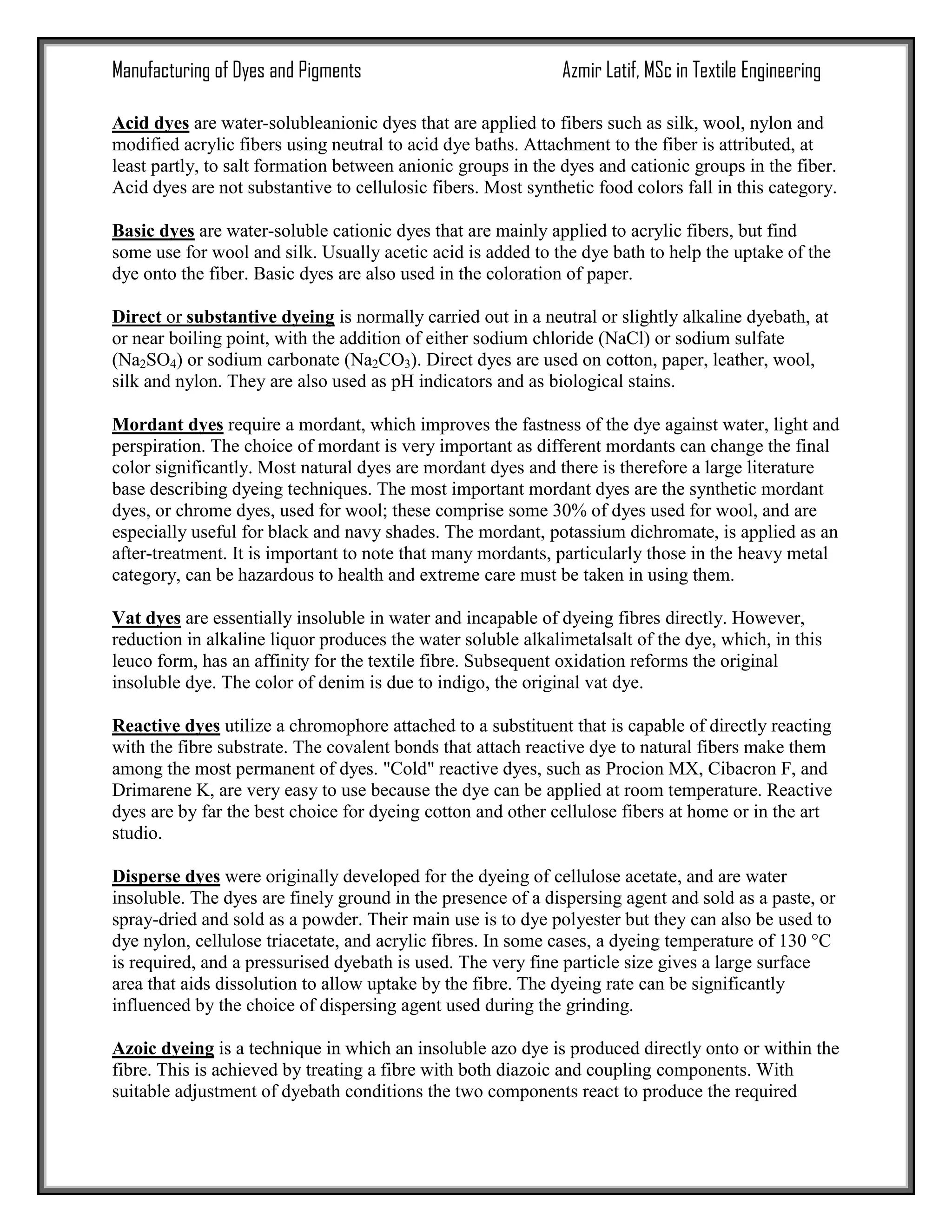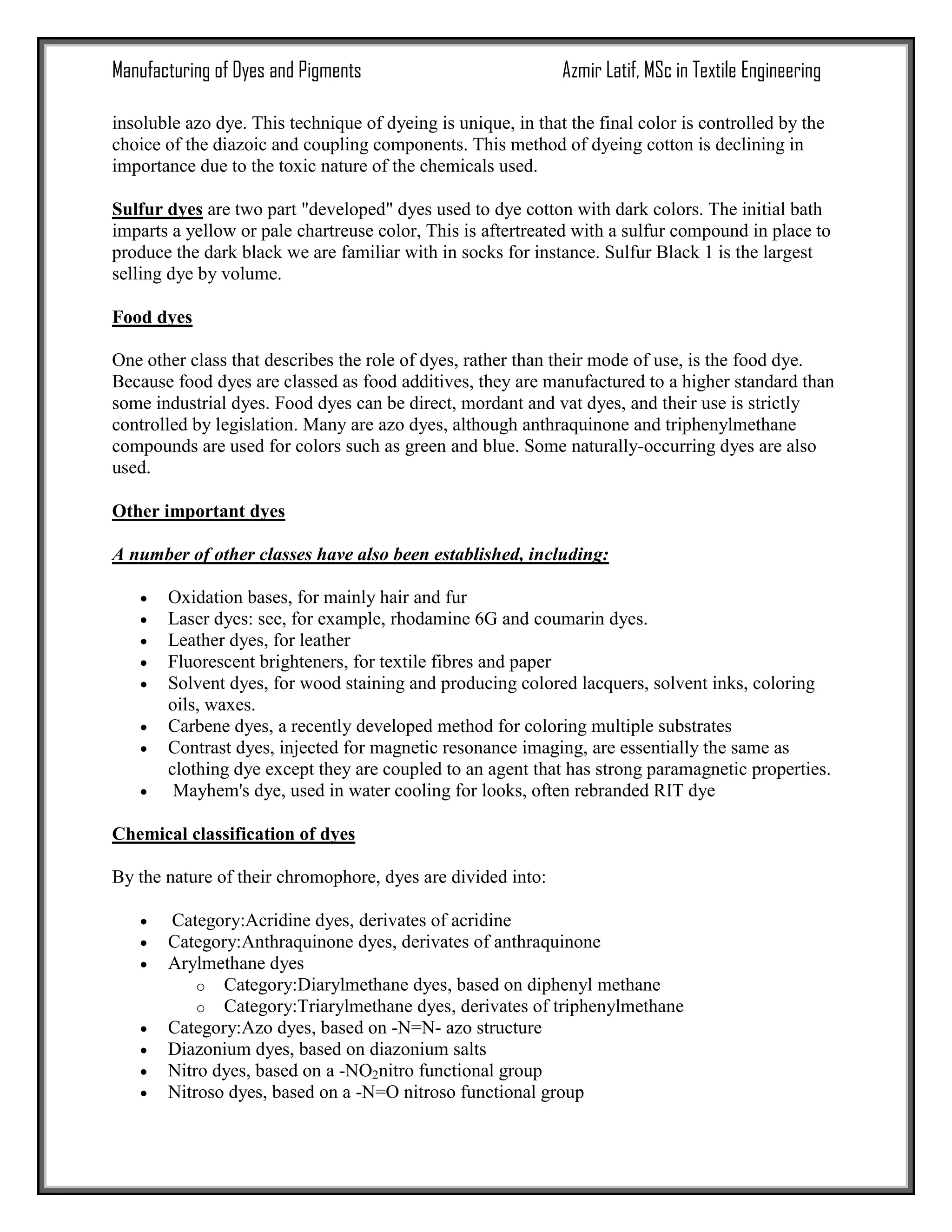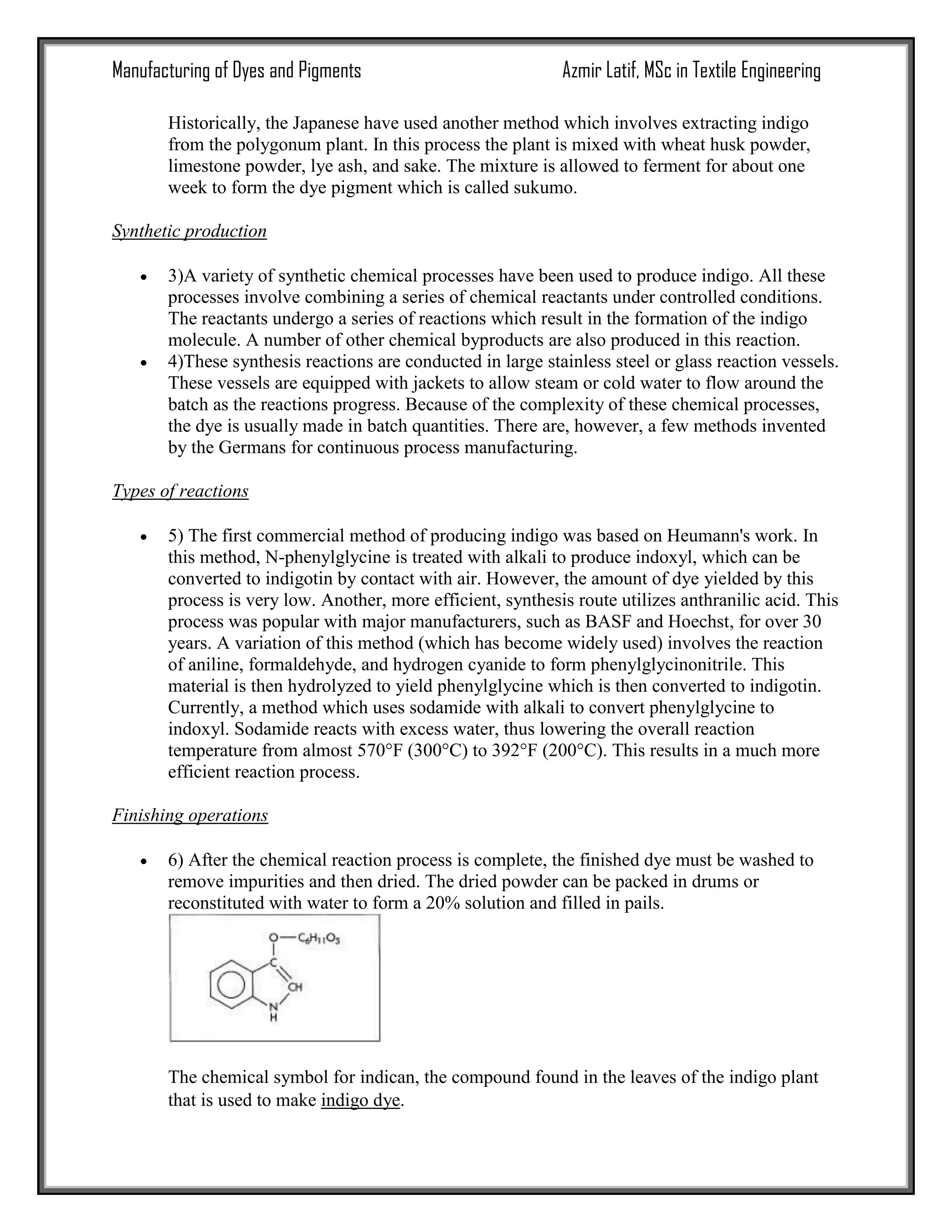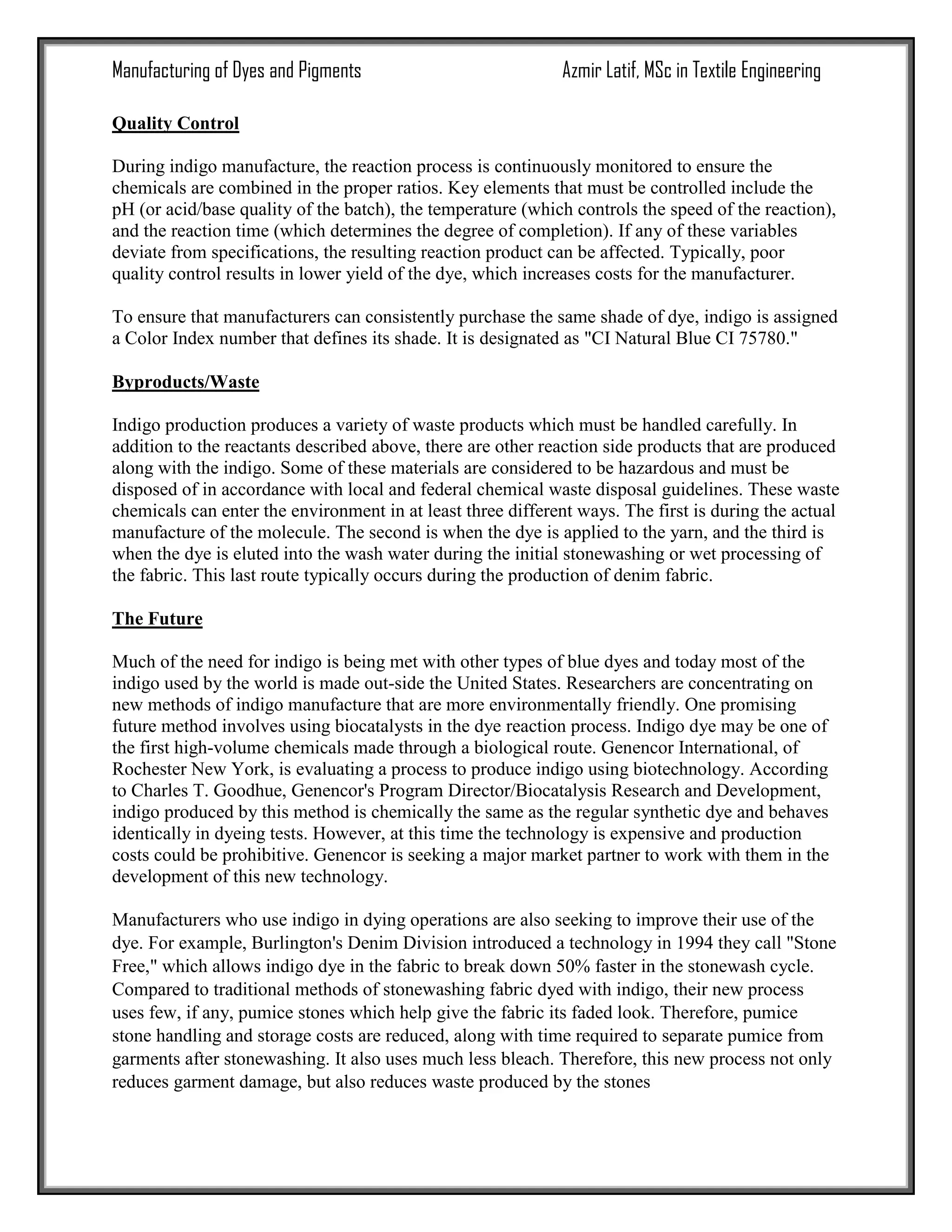The document provides a comprehensive overview of dye and pigment manufacturing, detailing various types of dyes, their application methods, and raw materials. It covers manufacturing processes from natural extraction to synthetic production, along with quality control measures and environmental considerations. Additionally, it highlights innovations and future directions in indigo production, focusing on sustainability and advancements in dyeing technology.





